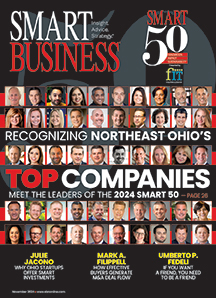Praxis Strategy Group recently ranked the Columbus region as the No. 8 metropolitan area for technology jobs in the U.S., up an impressive 21 spots from 2013.
This recognition, along with other recent honors like a back-to-back Top 7 Intelligent Community ranking and one of Time’s “Top 10 Cities to Start a New Career,” is solid confirmation that the region is winning the fight for the types of jobs that are driving the new economy — a fact many area companies have known for some time.
Having the right environment
The Columbus region has become a major center for financial and insurance services, research institutions, a cadre of data-driven operations and has one of the largest universities in the country, The Ohio State University.
Perhaps most exciting, a growing list of innovative startups and midsized companies are creating jobs and making waves throughout the technology industry. New ventures like the Columbus Collaboratory — an effort of seven of Central Ohio’s largest companies, with a focus on advanced analytics and cybersecurity — also point to the region’s strength in cross-sector collaboration.
Attracting talent
The diverse economy, talent base and cost of living make Central Ohio an information technology-friendly area.
The first ingredient, access to talent, is the most important. Home to more than 60 college campuses and 140,000 college students, the area creates a more educated and younger base — with a median age of 35, two years below the national median — than its metropolitan counterparts.
Because of a growing reputation as an open city with diverse opportunities for both entry level and experienced IT professionals, the region has become attractive for recruiting and retaining talent. The IBM Client Center: Analytics Solutions Lab and Battelle’s Cyber Innovation Unit are just two examples of where that talent flocks.
Following the sector’s growth
Columbus has recorded more than 30 percent job growth in the technology sector over the past decade. New programs in data science and a commitment from OSU to hire more than 50 advanced analytics-focused faculty are ensuring the region continues to meet workforce demands.
Larger cities like San Jose, New York and Boston might have more established IT hub reputations, but Central Ohio’s reasonable cost of living means professionals are more likely to own homes and have equal or better opportunities for advancement.
In turn, employers benefit from a cost-competitive workforce and are more easily able to afford top-level talent. Case in point: An $80,000 annual salary represents the 74th percentile of software developers in Columbus versus only the 24th percentile in Silicon Valley.
Nearly every industry — logistics, retail, manufacturing and even agriculture — is transformed by technology and the ability to perform advanced analytics, making the prospects for growth bright.
An emphasis by the state and the Columbus region to build necessary infrastructure to accelerate the technology sector’s development will help keep pace as demand increases.
Additionally, the region must continue to support technology startups and enhance its brand as an open and smart area to continue on a path to fuel innovation and attract the world’s best talent.

